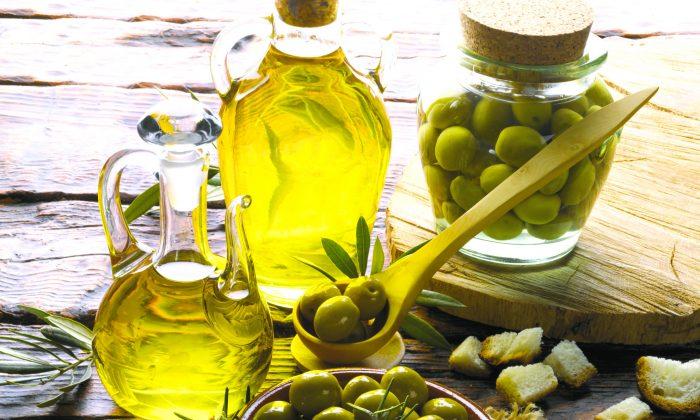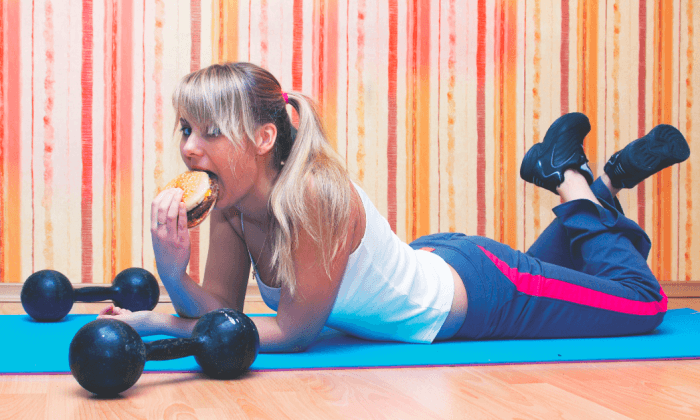Skim the Saturated Fat
If there’s a word that strikes fear into the heart of people, it’s fat. But fat is actually an important part of our daily intake, and just like calories, not all fats are created equal. “Good” fat, the kind that actually lowers your cholesterol, helps with brain function and balances hormones, is an essential part of weight control.
The operative word here is to skim “saturated” fat, meaning the fat that clogs your arteries and stresses your heart.
In developing the Cleaner Plate Club program, we work with what we call “the Fit Foody Triangle” approach. The Triangle is an easy way to remember how to get the balance you need at every mini meal, and it’s based on sound, documented nutritional needs.
It’s a 40/30/30 breakdown of macronutrients: 40 percent carbohydrates, 30 percent protein, and 30 percent fat.
That’s right, 30 percent fat! Now of that 30 percent, I recommend only 5 percent or less to be saturated. You can easily find this breakout on any nutrition label and the good news is, you don’t have to sacrifice flavor for it.
Good sources of fat in moderation include:
- Nuts (raw, milk, butters, oils), coconut (raw, oil, milk), seeds (raw, milk, butters, oils), avocados, olives, and Omega 3-rich seafood, like salmon and mackerel.
- Instead of full fat butter, try alternatives that are free of trans fats, like Earth Balance™ Natural Buttery Spread and Baking Sticks.
- Extra virgin olive oil, coconut oil and other nut/seed oils (hemp, flax, chia, sesame, sunflower, etc.). For sautéing, I like coconut and grapeseed oils since they do better in high heat. Save the extra virgin olive oil for dressings and uncooked dishes.
Other tips:
- Opt for non or low fat & organic milk, yogurt, and cheese. Also try dairy-free options.
- Cook with low sodium stocks, broths, and wine for lots of added flavor.
Use pureed beets and applesauce to replace fat in baked goods.
- Enjoy dark chocolate with 70 percent or more pure unsweetened cocoa.
Swap In Veggies for Fat
If you’re looking for a way to lower fat and up the antioxidant quotient in your meals, turn to produce. Beets, sweet potatoes, butternut squash, and fruit purees can cut or replace fat in many dishes, including baked goods.
In my Recipe Rehab-winning chocolate cupcakes, I took out all the cholesterol and the family couldn’t taste anything but deliciousness. No butter at all, just beets and cauliflower in the frosting.
Or my Mac & Cheese, where butternut squash is the creamy, dreamy hero.
Swap in pureed produce cup for cup and experiment with flavors. You can also use it as a substitute for eggs—about ¼ cup for every whole egg. You may find that you actually don’t need all that cholesterol, cream and buttah for a whole lotta’ flava.
Recommendations:
Using veggie purees in baking is one of my favorite tricks to eliminate fat from butter and cream and lots of cake and cookie recipes:
- Beets, sweet potatoes, butternut squash, cauliflower and pumpkin are a few of my tried and true ones. I’ve used these in cupcakes, cookies, and breads, because the moisture and density of these ingredients do just what butter does.
- In my decadent mocha chocolate chip cake, which won ABC’s Recipe Rehab challenge, the secret ingredient was beets, and the family was floored at how good it tasted. The amazing part is, we were able to entirely eliminate the butter from their original recipe. Gone. It is OK to use canned beets in this preparation.
- Cauliflower can add body to frosting while butternut squash and pumpkin are great complements to spiced cakes and cookies. These purees also make a great creamy filling for desserts like cannoli and sweet ravioli or as a substitute for butter or cream when blended with coconut or almond milk.
Deny the Fry
In the cultivating of palates, something big happens between the departure of baby foods and most children’s menus. The color fades from the plate like a person about to faint. From a palette of red, orange, green, purple and blue, we introduce white to brown food that gets deep fried, bathed in sugar or salt and over takes our plates and palates.
French fries, donuts, and those other deep fried delights you’ve been munching are not only soaking in the grease, they can lower the pH levels in your body and induce acidity and can bring on a variety of unsavory side effects like acid reflux, gastrointestinal disorders, and other chronic diseases.
The act of frying acidifies foods and delivers excess fat that your body can’t use for healthy operating. If the urge takes you to that perfect golden french fry, southern fried drumstick, or chocolate dipped donut, you can make your own fitter versions with these simple tricks:
- Spray sliced sweet potato wedges and chips with nonstick cooking spray and bake in the oven until crisp; use fresh garlic and oregano, spicy chili powder or cinnamon to boost the flavor quotient.
- Use a dehydrator to make perfect potato, kale, and banana chips with very little oil and without the high heat, which destroys valuable enzymes.
- Purchase an electric doughnut maker, which allows you to bake your holey delights. Swap out white flour for whole grain or gluten-free alternatives and sweeten with all-natural stevia and real dark chocolate (look for the bars made with 70 percent or more cocoa powder.
For the Love of Avocados
Avocados are a tree fruit that contain lots of nutrients and heart-healthy fats. The mild, creamy flavor of avocados make them perfect for many dishes: whether it be in your favorite guacamole recipe, on wraps, or blended into smoothies, soups, or baked goods.
They contain more potassium than bananas, which is essential for muscle growth and organ function, and they are full of essential vitamins like C, E, K and antioxidants that keep the immune system strong. The creamy green flesh is also full of healthy fats—the monounsaturated fats that won’t raise your cholesterol levels.
Just be aware that 1 ounce of avocado contains almost five grams of fat. If you eat an average of 2,000 calories per day, indulging in one whole avocado would take up half of your daily recommended fat allowance, so keep that in mind when you’re savoring these succulent little gems.
Mareya Ibrahim is The Fit Foody, an award-winning chef on Everyday Health’s Emmy-nominated show “Recipe Rehab,” and author and founder of EatCleaner.com. Her book “The Clean Eating Handbook,” a guide on how to eat cleaner and get leaner, was released in May 2013.






Friends Read Free